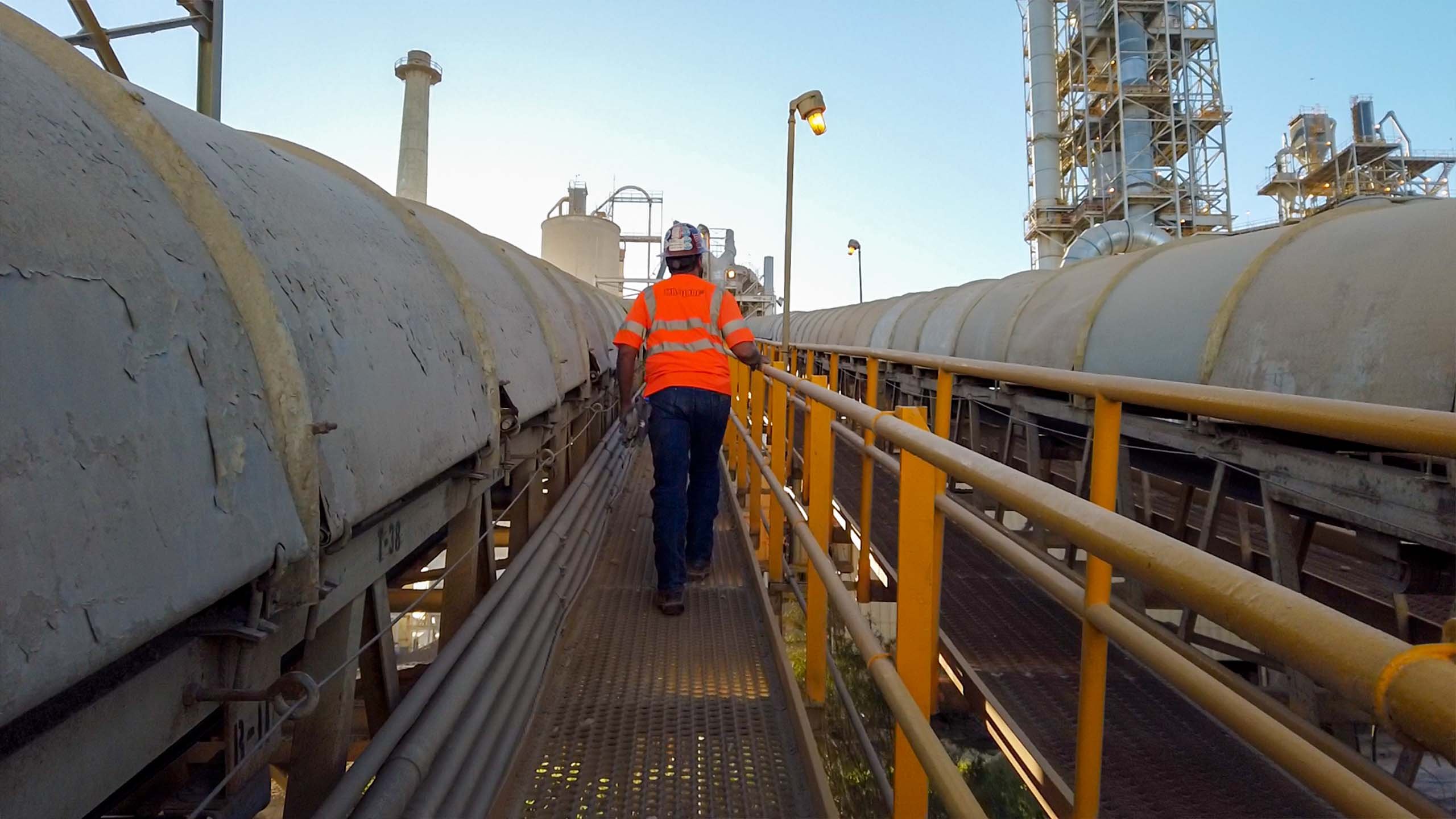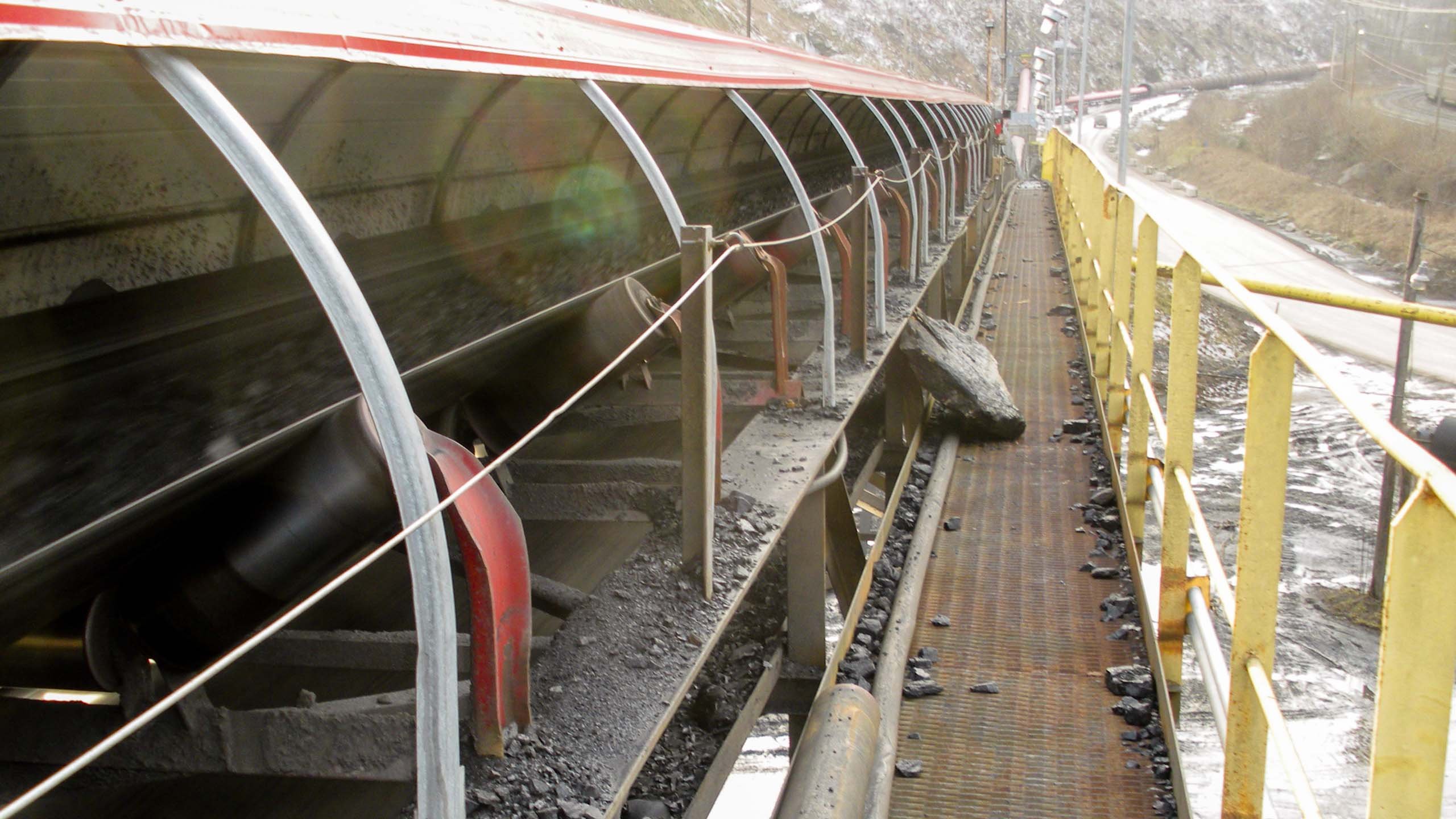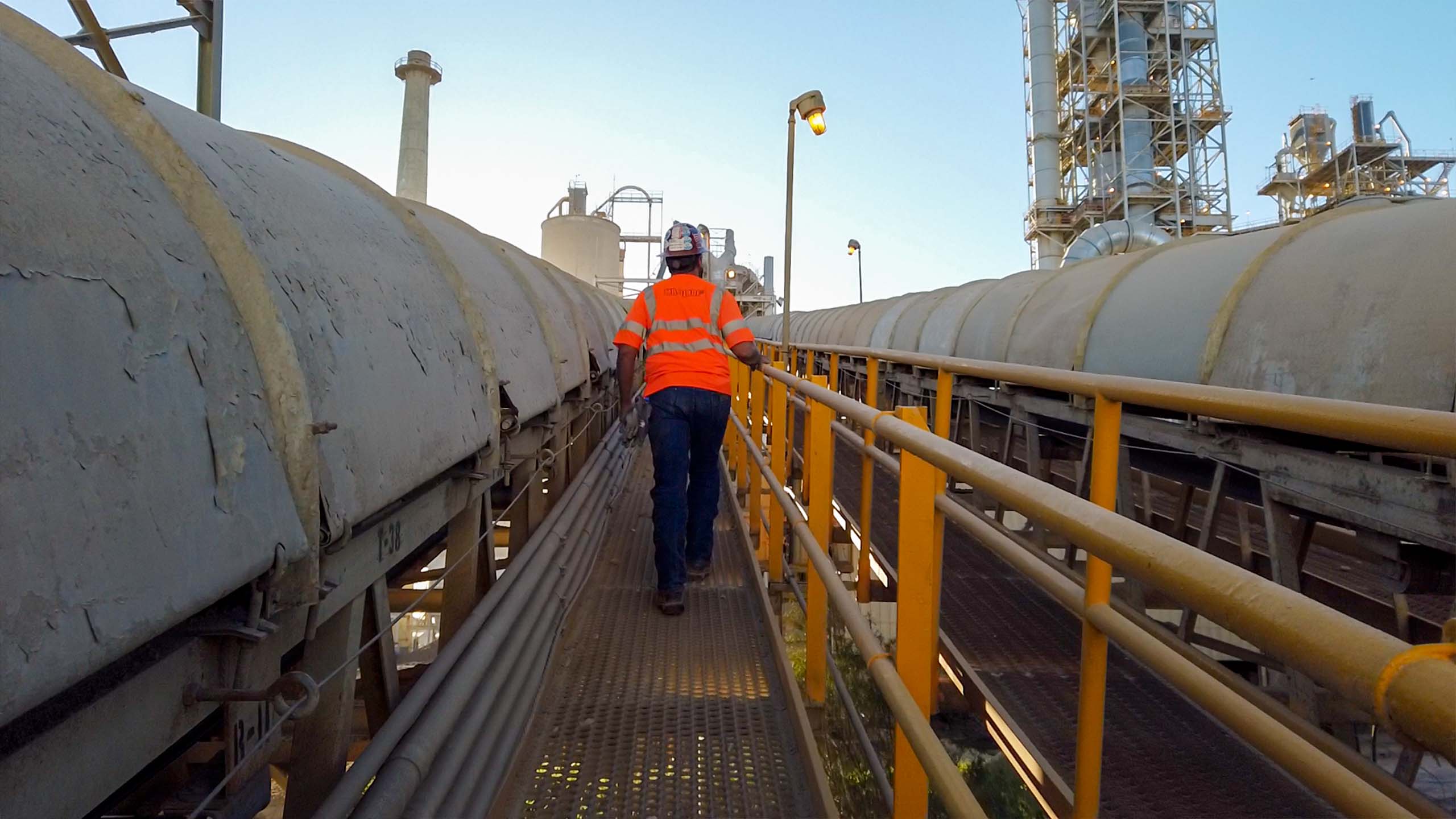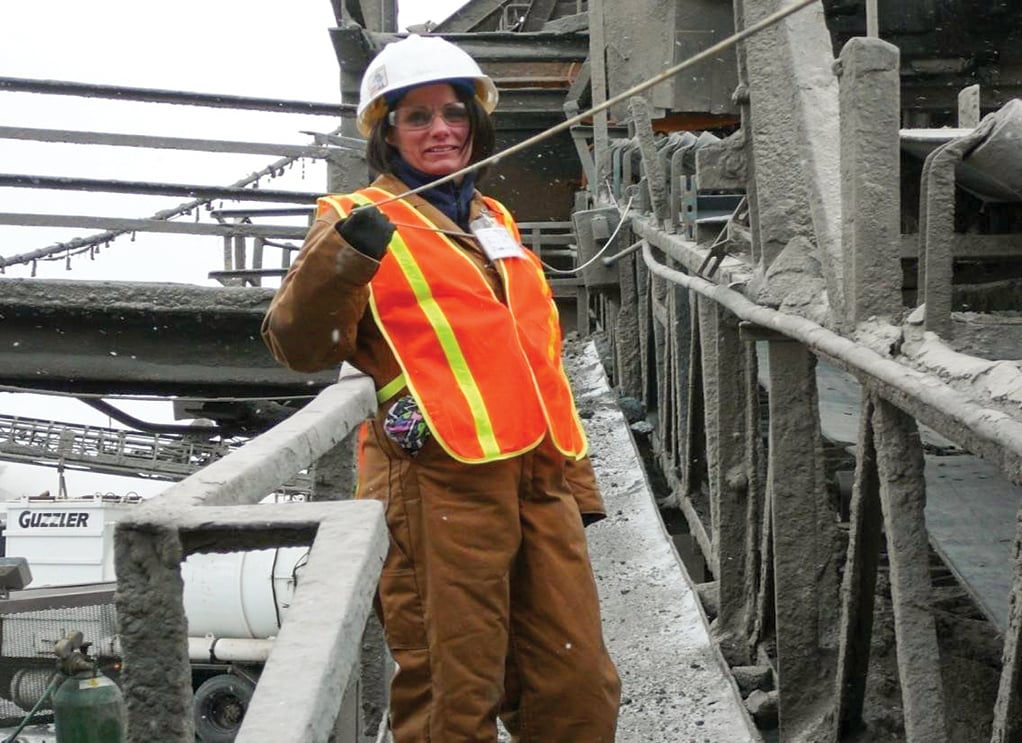By Dan Marshall on Aug 27, 2021 11:11:18 AM
This is my 5th Good, Bad, Ugly blog post (keep reading for links to the other four). I enjoy sharing my experiences and photos from the "road" in hopes it will give you some insight into the bulk materials handling industry, as well as into working around conveyor belts...the Good, the Bad, and the Ugly.
Good

Good...this is good. A clean and free-of-obstructions walkway. A tight and ready-to-grab-in-an-instant emergency stop switch. A sturdy handrail. A properly protected and highly visible worker. As I walked this conveyor, I was compelled to stop and capture the sight/moment.
Bad
I tend to focus on the good scenes but I do see a lot of bad - like below. 
This walkway is unsafe and untidy. Let's play a game. I spy. I'll go first.
I spy:
- An old or out-of-commission roller along the left side of the catwalk
- Spillage of different-sized rock piled up (that appears to have been pushed, kicked, or swept to the outside of the catwalk which tells me the issue is well known AND continually left unsolved)
- Large, jagged rock
- The hose along the left side of the catwalk is limiting the available walk space, presenting a trip hazard. Untidy!
Poor housekeeping is a problem I see a lot. I encourage operations to do regular inspections of their entire conveyor system. It is the best and easiest way to come across an issue before it turns into a major problem, accident, or unexpected shutdown. It also reduces the chance of MSHA citation(s). Housekeeping is consistently one of the most cited violations. I have a lot of plants that farm inspections out due to lack of time. That certainly is an option and in my opinion, has the benefit of being performed by a professional third party with fresh eyes. Someone who won't be used to seeing and accepting the everyday conditions will be thoroughly "walking the belts."
Whatever method you choose, take care of the issue before an incident or citation occurs!
Ugly
Not Janice...she is not ugly but the emergency safety cable is. The safety cable should always be kept taut so in the event of an emergency, it can easily be grabbed and trigger the conveyor belt to come to a stop.
If regular inspections, like mentioned above, had been taking place - this stretched-out, unsatisfactory emergency stop cable wouldn't have been discovered by us. I will tell you what, I wouldn't want to take a tumble on a walkway or be in a situation that warranted grabbing onto that emergency stop for dear life. I fear that is a losing battle! I am glad the ineffective e-stop in picture three isn't paired with the dangerous walkway in picture two. 😬
So, how did that rock get on the walkway in the first place?
The material had to spill off of the conveyor - something that should not happen let alone be accepted as normal. Most times, lack of belt support, sealing, and tracking leads to material spillage.
Let's start with belt support. Proper support is critical in order to prevent spillage. Material spillage creates safety hazards to personnel, the potential for lost material, increased labor cost and cleanup, poor housekeeping, and the threat of unexpected downtime. The belt should be stabilized throughout the entire load zone length. If the belt sags between idlers below the loading zone or flexes under the stress of loading, fines and lumps will work their way out the side of the conveyor, dropping onto the ground as spillage.
Now onto belt sealing. In order to successfully seal a belt, it first must be flat and free of sag. Skirting should then be installed with the intention of sealing that conveyor on the outer edges to prevent the escape of material, making it run more efficiently. If the belt above had been properly sealed and supported, all of that rock wouldn't have made its way to the floor of the catwalk.
Lastly, belt tracking. Belt mistracking is a very common problem and must be controlled before spillage can be addressed and eliminated. The key to combatting mistracking is how you go about it. Tracking a belt should be methodical, it is usually not one quick adjustment. It takes a complete understanding of the root cause before you can correctly resolve it.
In case you want to see my other Good, Bad, Ugly Posts:











comments